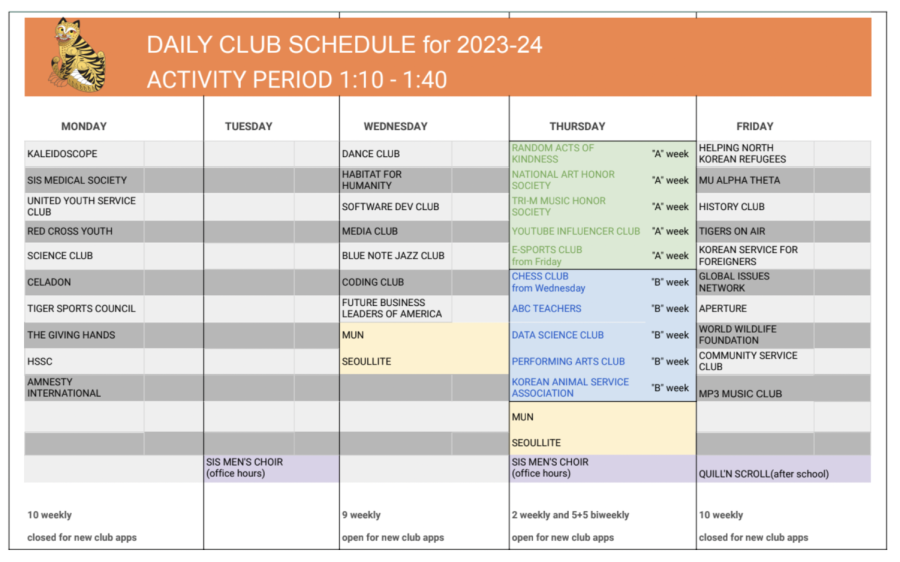Leadership makes changes to next year’s club schedule
On April 6, high school vice principal Chris Del Vecchio sent an email to all high school students announcing news about the club renewal process. 41 out of 45 clubs that applied for renewal were successful and there are five clubs that will no longer be active the next school year: STEM club, Green club, HOSA, Financial Investment Club, and SADD.
The following week, the final draft of the club schedule was sent to the high school. The largest change was the elimination of club meetings on Tuesdays. Instead, activities such as grade assemblies, team pictures, pep rallies, or other major club events will take place during that time. However, the leadership team is still discussing how far in advance these activities would need to be planned in advance.
“I think the change I look forward to seeing the most is how clubs take advantage of the stage and time,” Mr. Del Vecchio said. “There will be opportunities for clubs to step up and use this extra protected time, whether that’s by building on events clubs put on in the past and taking them to a new level or creating entirely new activities. I am also looking forward to having a few school wide assemblies that have not existed for a few years.”
Around the end of the first semester, the leadership team decided to explore serious adjustments to the club schedule. This was mostly due to the collective concern amongst teachers and students about events clashing with club meetings, as well as the desire to maximize the utility of activity periods.
The leadership team first put together four ideas for a new club schedule and brought them up during the club executive lunch series held in the first semester. After receiving feedback from various club executives, the leadership team incorporated their input for further discussion. However, they remained unsure regarding which model they would choose to follow until receiving the club renewal proposals.
After examining the balance in club numbers, days, and changes existing clubs wanted to make, the leadership team crafted the first draft. This was first sent to teachers for faculty feedback before going to the junior class, who gave another round of feedback on the benefits and challenges of the structure.
“I felt honored to be able to provide feedback and was overall glad to see how there would be major shifts in the club schedule,” Melissa Kim (11), executive of three clubs, said. “Now, clubs no longer have to compete with other events or worry about people not being able to show up due to other scheduling conflicts. I think this will also encourage more clubs to host wide-scale events since there will be a promising amount of student participation and the effort put into preparation of these events would thus be paid off.”

Erin J Choi is a senior reporter for Tiger Times. She loves to listen to music, dance, and socialize with her friends. She is highly engaged with school...

